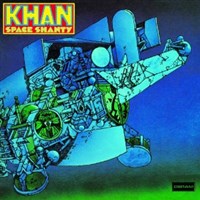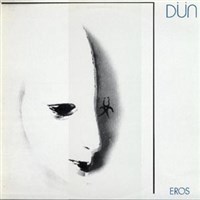
BY HASAN MURAT SÜMER (EE/IV)
hasan.sumer@ug.bilkent.edu.tr
The world of literature is filled with novelists who wrote only a single legendary work. The case is the same in the world of music. As we discover new music throughout our lives, we sometimes run into musicians with only one studio album release who make us wonder why they didn’t produce any more. There are also musicians who make us wonder why they kept going after their great first release, but let’s not think about them for the time being. I’ve already discussed three such albums from different genres in this column.
Siddhartha, a psychedelic rock band from Turkey, in 1998 released a self-titled album that exceeds an hour in length. The band, which had been playing since 1993, was embraced by some parts of the Turkish audience, but nationwide recognition wasn’t achieved. Thankfully, Trail Records from New York discovered, remastered and revised this gem, re-releasing it in 2009 under the title “Trip to Innerself” and giving listeners around the world access to the band’s music. There’s a lot of Pink Floyd influence here; ambitious and lengthy electric guitar parts are abundant. One can easily indulge oneself in the music and start playing air guitar. Synthesizer sounds do a good job of strengthening the psychedelia. An unexpected vocalist, Nil Karaibrahimgil, makes a guest appearance in the track “Black.” It’s a great album by musicians who took their jobs seriously; I especially recommend the track “Nervous Breakdown.”
Steve Hillage, a key musician associated with the Canterbury scene (among other genres), is credited with the writing of almost all of the material on “Space Shanty” (1972), the only album released by the band Khan. The Canterbury scene is generally recognizable for  its jazzy side being stronger than its rocky side, but Khan turns the tables with this release. The album is truly powerful in targeting a wide audience. On one hand, it appeals to listeners who appreciate complex compositions and technical playing, while on the other it also manages to please those who like to hear simpler, emotional melodies and tend to lose focus when things get complex. Khan satisfies both by constantly switching between the two styles throughout the album. There are also a lot of passages that serve both tastes by superimposing one style on the other in a layered manner. The instrument choice is very simple, with the electric guitar and keyboards doing most of the job, occasionally letting their acoustic counterparts take their places. It’s one of those albums that you have a sudden desire to listen to about once a month, once you’ve heard it for the first time. I blame its relative obscurity on the fact that commercialism is the most important factor in determining what music is able to gain recognition worldwide. If that weren’t the case, “Space Shanty” easily could have taken its place among the albums that are generally considered to be the greatest. This album is ABSOLUTELY SOLID.
its jazzy side being stronger than its rocky side, but Khan turns the tables with this release. The album is truly powerful in targeting a wide audience. On one hand, it appeals to listeners who appreciate complex compositions and technical playing, while on the other it also manages to please those who like to hear simpler, emotional melodies and tend to lose focus when things get complex. Khan satisfies both by constantly switching between the two styles throughout the album. There are also a lot of passages that serve both tastes by superimposing one style on the other in a layered manner. The instrument choice is very simple, with the electric guitar and keyboards doing most of the job, occasionally letting their acoustic counterparts take their places. It’s one of those albums that you have a sudden desire to listen to about once a month, once you’ve heard it for the first time. I blame its relative obscurity on the fact that commercialism is the most important factor in determining what music is able to gain recognition worldwide. If that weren’t the case, “Space Shanty” easily could have taken its place among the albums that are generally considered to be the greatest. This album is ABSOLUTELY SOLID.
The fully instrumental album “Eros” (1981) by the French band Dün literally sounds like nothing else. The Zeuhl genre does not have a concrete definition; it was invented solely for the French band Magma (in my opinion, Magma sounds like a cult). After that, the term was used to group other bands from France that produced similar sounds under the same umbrella. “Eros” is one of the works classified as Zeuhl. In truth, “Eros” is a blend of jazz fusion, rock in opposition, psychedelia and chamber music, with influences from Frank Zappa. For us humans, giving up on the album and leaving it for the aliens, just as we did with James Joyce’s “Finnegans Wake,” would be the smartest thing. There is no concept, no theme, no emotion, no epic climax and no simplicity in the music. There is absolutely nothing to simplify its comprehension for listeners. However, the music is not pretentious, repetitive or boring, and the  musicians are extremely talented. Sadly, I’m just not qualified enough to describe the epiphanies lying hidden within the album. The only group of people who can easily enjoy it are flute enthusiasts, because there are wonderful flute parts everywhere, either at the front or in the background. Spacey keyboard sounds are abundant, and drums, along with the bass guitar, are very dominant. The record is extremely rare and, even in 2016, very hard to acquire. It’s one of the most unique musical works ever, and a true eye-opener.
musicians are extremely talented. Sadly, I’m just not qualified enough to describe the epiphanies lying hidden within the album. The only group of people who can easily enjoy it are flute enthusiasts, because there are wonderful flute parts everywhere, either at the front or in the background. Spacey keyboard sounds are abundant, and drums, along with the bass guitar, are very dominant. The record is extremely rare and, even in 2016, very hard to acquire. It’s one of the most unique musical works ever, and a true eye-opener.
